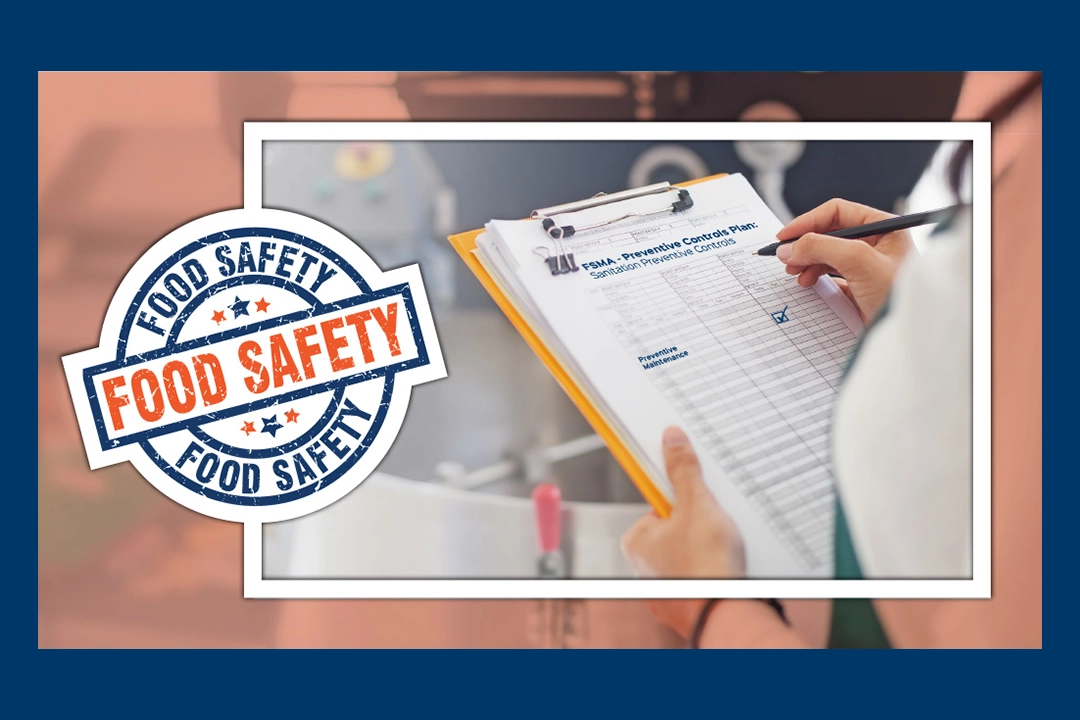Consumers put their trust in the food industry every day, expecting the products they buy are safe for consumption. To help meet consumer safety expectations, the FDA signed the Food Safety Modernization Act (FSMA) into law in 2011, including sanitation preventive controls, which triggered a shift toward prevention over reactive responses to food contamination threats.
Within FSMA there is a rule on Preventive Controls for Human Food. These preventive controls are steps that food facilities must take to reduce or eliminate food safety hazards including written and implemented food safety plans addressing sanitation preventive controls. These sanitation preventive controls are “procedures, practices, and processes to ensure that the facility is maintained in a sanitary condition to minimize or prevent hazards such as environmental pathogens, hazards from employees handling food, and food allergen hazards.” [1]
Sani-Matic’s Tactical Solutions Engineer Chris Raulin highlighted the new emphasis on using qualified individuals in preventive controls planning. “With prevention as a focus, one of the big changes food manufacturers faced with the implementation of FSMA is the requirement to have a certified PCQI develop a facility’s Preventive Controls plan showing how it meets new regulations,” explained Chris Raulin.
What is a PCQI?
A Preventive Controls Qualified Individual, or PCQI, is the title given to someone who has completed specific training in the development and application of risk-based preventive controls or is otherwise qualified through job experience to develop and implement a food safety system.
Both Raulin and Sani-Matic’s Tactical Solutions Manager Micah Muller have completed the necessary training to be certified PCQIs, and they frequently lend their expert knowledge regarding FSMA’s Preventive Controls for Human Food as it relates to sanitation preventive controls.
FSMA and Sanitation Preventive Controls
“There’s a variety of controls,” Raulin said. “Process, labeling, allergens, supply chain controls, a recall plan, and more. Our customers look to us for help regarding their sanitation preventive controls.”
“Interestingly, the law doesn’t tell you that you have to use specific controls. It comes down to risk mitigation and establishing which controls to put in place to ensure a safe, quality product. The responsibility is on the manufacturer to define what needs to be done and prove how those specific parameters have been met to comply with industry standards,” he added.
As it relates to sanitation, industry standard is to control for cleaning parameters based on TACT – Time, Action, Chemical concentration, and Temperature.
“We work with our clients to clearly define the parameters necessary to provide a proven, repeatable sanitary clean. We go through the qualification and testing process to prove those parameters are met, process lines and items are clean, they will be void of allergens, and all soil will be removed,” said Muller.
“Then, we help customers establish a way to monitor those parameters with items like a flow meter, conductivity probe, RTD for temperature and proper programming that controls for time,” Muller continued. “With those items in place, plus a chart recorder or some data reporting system like our SaniTrend data acquisition and management system, you have everything needed from clear parameters and monitoring to documentation supporting complete sanitation preventive controls set out in a PCQI plan.”
Preventive Maintenance – Planning to Prevent Contamination and Equipment Failure
With a sanitation controls plan in place, manufacturers can prove that a method of cleaning is effective. A Preventive Maintenance (PM) program ensures the cleaning equipment within that method is operating as it should.
“We work with our suppliers to identify the components with high failure rates to know what needs to be replaced. A Preventive Maintenance (PM) program gives you peace of mind knowing that the standard failure mode is accounted for,” said Raulin.
He provided a detailed example of the importance of component replacement, “A standard butterfly valve has an elastomer seal inside the valve to make sure water can’t leak past the closed valve. That plastic elastomer seal is the wear point and can allow water or chemical to leak past as it wears down, ultimately causing cross-contamination. By identifying a higher rate of failure for that part of a valve, we will switch those wearable parts out with replacement parts. Now, instead of having a valve that has been in service for two or three years and is slowly degrading, we’re switching the wearable parts out every year. That’s the point of preventive maintenance. You’re switching it out before it fails, preventing the risk of a much broader recall.”
“It may take 4 or 5 partial failures to lead up to a catastrophic failure. With preventive maintenance, we put a plan in place to help our customers avoid that and keep them up and running.”
[1] FDA FSMA Final Rule for Preventive Controls for Human Food


